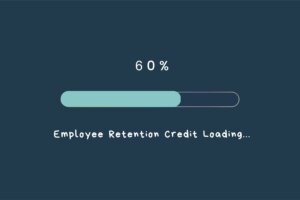“There are lies, damned lies and statistics.” -– Mark Twain
Here are some statistics about the CFC, and some common sense observations as to why you should almost always not base your actions on numbers that reflect the entire non-profit sector.
It would be like getting a weather report for the Northern Hemisphere, perhaps interesting, but usually not too valuable for letting you know what you should do about your outdoor plans!
2011 CFC Results
The 2011 Combined Federal Campaign results were just released by the Office of Personnel Management, Office of CFC Operations (opm.gov/cfc), and the total raised was $272,679,280. In terms of actual giving, if the CFC were a foundation, that level of giving would make it the 14th largest foundation in the USA … ahead of the David and Lucille Packard Foundation.
Nonprofit Research Collaborative 2012 Report
Another report that was released in April is the Nonprofit Fundraising Survey by the Nonprofit Research Collaborative, which is a consortium of seven different organizations: Association of Fundraising Professionals, Blackbaud, The Center on Philanthropy at Indiana University, The Foundation Center, Giving USA Foundation, GuideStar, and the National Center for Charitable Statistics at the Urban Institute. This REPORT provides a really good snapshot of the current fundraising environment.
Federated Campaign Statistics
In the Nonprofit Fundraising Survey, one of the questions that was asked was, “Does your non-profit participate in federated campaigns?” Federated campaigns include the Combined Federal Campaign, United Way campaigns, Jewish Federation campaigns, and others. The response: 48% of non-profits participate in some type of federated campaign.
A subsequent question in the federated campaigns area, was, “If you do participate in a federated campaign, what percentage of funds do you receive from that campaign?” Here the numbers get interesting and misleading, all at the same time.
53% receive between 1-9% of their revenue from federated campaigns.
11% receive between 10-25% from federated campaigns.
3% receive between 26-50% from federated campaigns.
At first glance, it appears that the majority of organizations are not doing too well, since more than half (53%) are only in the 1-9% range. Here’s where the problems with statistics start to show up. While I do not know if the American Red Cross was a respondent to the survey, if they were, they would be in the less than 1% category for the gifts they receive from their CFC donors. However, that “small percentage amount” is actually $5.5 million dollars, which, I think, even the Red Cross notices !!
One client, with an annual budget in the $125,000 range, followed the tips and techniques that I’m sharing in these blog posts and generated approximately $8,500 in 2011 pledges. They are very pleased with those numbers – as that was their first year in the CFC.
The point I hope I’ve made is that you should not be swayed by someone else’s success (or more the case, someone else’s lack of success) to affect your CFC action plan and steps. The blueprints and positive steps I’m sharing with you have been proven to work.
And, as I regularly emphasize, workplace giving is the only type of nonprofit fundraising that is subsidized, low risk and high leverage.
In the next post, I’ll be talking about what specific next steps you should be taking regarding your CFC campaign.
=-=-=-=-=-=-=-=-=-=-=-=-=-=
During his 25-year career in the Federal sector, Bill Huddleston, The CFC Coach, served in many CFC roles. If you want to participate in the Combined Federal Campaign, maximize your nonprofit’s CFC revenues, or just ask a few questions, contact … Bill Huddleston
=-=-=-=-=-=-=-=-=-=-=-=-=-=
We’re taking next week off to celebrate the Fourth. We hope to see you back here on July 10. Also, for the Summer, we will be posting only once each week, Tuesdays. We’ll be back to our twice/week posting on Thursday, September 6.
=-=-=-=-=-=-=-=-=-=-=-=-=-=
If you’re reading this on-line and you would like to comment/expand on the above, or would just like to offer your thoughts on the subject of this posting, we encourage you to “Leave a Reply” at the bottom of this page, click on the feedback link at the top of the page, or send an email to the author of this posting. If you’ve received this posting as an email, click on the email link (above) to communicate with the author.















